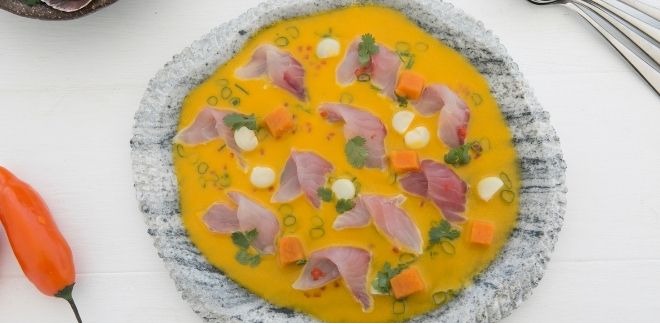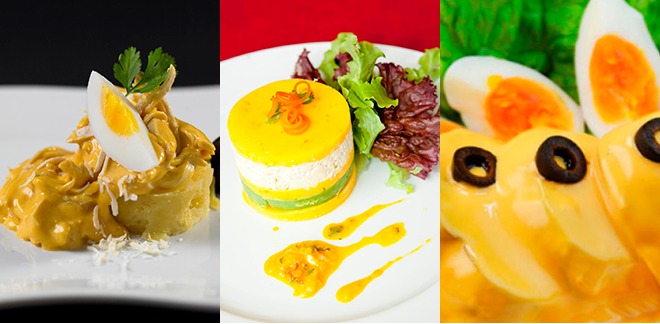Secrets and history of Peruvian Creole food
Síguenos en:Google News
Peruvian cuisine is characterized by the mixture of cultures, flavors and customs that are reflected in each one of its recipes; as well as by the great variety of ingredients that it uses and that are products off our geography and biodiversity. The coast bathed by the Pacific Ocean, which gives us rich and nutritional marine species; the Andean soil that offers us delicious tubers such as potatoes, ulluco, yucca and sweet potato; and the wonderful Amazon that offers us various products such as cocoa and sacha inchi, among others.
Food with history and flavor
Peruvian Creole food has preserved the art and culinary techniques of ancient generations; recipes that have survived over time, and others that have undergone variations without losing their exquisite flavor. Chanfainita for example is a classic in many homes, a dish that is made from cow lungs (bofe), and which first appeared many years ago, during the time of the Viceroyalty, when African slaves arrived in Peru and began to include the viscera of animals in food, something which the Spaniards considered to be "ignoble parts".
The delicious cau cau, whose leading ingredient is the mondonguo, would probably have come from Andean cuisine. There are several theories regarding the origin of its name, some claim that it comes from the Quechua word "can" which means "offal" and that, thanks to Chinese influence, this dish took the form that is known today. For the Italian researcher, Antonio Raimondi, this stew probably originates from Arequipa, where it was made with a base of "ataco", a kind of roe also known as "cau cau".
Another typical dish, of Andean origin, is Carapulcra. This first appeared during the time of the Incas, and its name comes from the Aymara "qala phurk'a", which means "to cook on stones". This dish is based on dried potatoes, pork and ají panca.
A dish that cannot be left out, an icon of Peruvian cuisine, is ceviche, known and recognized throughout the world. Its origin goes back to Peruvian fishermen in the past who, taking a break from work, would cut fresh fish and eat it with chili peppers. Lemon and onion were added over the years. It is well known that each Peruvian region has adapted it to its customs; for example, in Piura, it is accompanied by zarandaja, sweet potato and corn; in Chiclayo it is served with the famed corn tortillas.
Dishes that reveal fusion in our cuisine include Ají de Gallina. The origin of this delight is believed to lie in the medieval stew Manjar blanco (blancmange), which consisted of a stew based on chicken breast, rice starch, sugar and almonds. Having arrived in Peru, housewives changed the almonds for something more affordable like pecans; and the sugar for yellow pepper. Lomo saltado comes into the same category, a stew that is the result of the perfect marriage between Peruvian flavor and Cantonese Chinese influence, and which is demonstrated in the cooking of this dish that is usually prepared in a wok (Chinese pan used to sauté food).
Desserts with tradition
But not everything is salty, Peruvian cuisine has delicious desserts that contain culture and history. The most representative are probably the picarones, which come from the Spanish buñuelos. Pumpkin and sweet potato were added in this case, as well as a sweet honey based on chancaca, giving rise to this incomparable Peruvian dessert.
Mazamorra morada (purple pudding) and rice pudding (Arroz con leche) are classics that delight all palates. The former is one of the most representative of the Peruvian capital, and is believed to have emerged in pre-Columbian times, when ancient Peruvians cooked "motalsa" or "ishkupcha", a kind of mazamorra with yellow corn. With the arrival of the Spanish, cinnamon, quince, cloves and sugar were added. Years later, it was replaced by purple corn and mixed with sweet potato flour and nuts. Originally it was only consumed in the procession of the Lord of Miracles.
In the case of Arroz con leche, this arrived with the Spanish, who brought this dessert with Arabic influence (the word " arroz" (rice) comes from a word adapted from the Arabic "arruzz"). The original recipe included honey, and in Peru they adopted it by giving it a special touch. Arroz Zambito arose from this recipe, which is based on chancaca, grated coconut and orange peel. It owes its name to the dark color it acquires.
Another old dessert is Ranfañote. Two theories have been offered about its origin: the first goes back to colonial times when African slaves used the leftovers of their masters' food such as toasted bread, fresh cheese and coconut, and added sugarcane honey to give it flavor; the second refers to the war with Chile, in which Peruvian soldiers added honey to the toasted bread and cheese they received.
We close this list with the Suspiro a la limeña (Lima Woman's Sigh), a dessert that, according to experts, was given that name by the Peruvian poet José Gálvez, who was kindly received when he arrived home. His wife, Amparo Ayarez, had prepared him a dessert based on blancmange, egg yolk and syrup meringue. The writer did not hesitate to praise his wife, telling her that it was "as soft and sweet as a woman's sigh". It has not undergone great changes since its creation, except for the name, which was originally "meringue sighs".
It should be noted that the list of soups forming part of Peruvian Creole food history is much longer, and that each of them has something to tell.
Sources: The Republic / El Comercio/ Andina/ Le Cordon Bleu/ Lima Sabe







